|
Leif Erikson Day was on October 9th so that seemed like a good idea to do a project on! Leif Erikson was the first European to come to North America, about 500 years before Christopher Columbus arrived. The kids thought I was joking when I told them that vikings were real. They thought that vikings were just something that was on the Minnesota Vikings (SKOL VIKINGS!) helmet. Then we had to have a discussion about the difference between vikings and dwarfs which was an understandable confusion due to their similar appearances. This is another one of Cassie Stephens' amazingggg projects.
Our first day of the project was probably the most hectic art class I've ever had. It was CRAZY how much we had going on. First, students needed to sponge paint a large sheet of paper white. Then they were to sponge over top of that with two other colors of their choosing. Then they needed to pick up a strip of white paper and a strip of blue. With the blue one, we gently splatter painted white paint onto it. With the white one, we dry-brushed blue and then white paint, going from the center of the page out to the edge. On the second day, we tore our two strips of paper the long way. Then we layered the torn strips on top of each other, starting at the center and working our way down to the bottom of our sponge-painted paper. We only put glue on the straight edges of our torn strips, NOT the torn edges. This would allow us to curl our waves later in the project. We also used a tracer to create a ship and then added a mast. For the third day, we created a sail. We added stripes to the sail and a small tribe symbol. When we attached the sail to our mast, we put glue on the top and bottom of the sail and gave it a slight pinch when gluing it down. This created a small curve to our sail so that it popped out from our artwork a bit. On our last day, we added small shields to the edge of our ship. Then we curled our torn-edge waves around a pencil so that the waves popped off the paper like our sails did. After they were done with their project, we had a little writing assignment about our viking ships. Writing in art?!?! I know. Crazy right? I asked the kids to tell me about their viking ship. Where were they going? Why were they going there? They were asked to write four COMPLETE SENTENCES. They had some pretty comical and creative responses! I got so many compliments from the other teachers about these! Our artists did so well!
0 Comments
Continuing with our Pop Art unit, we learned about the second most famous Pop Artist (behind Mr. Warhol), Roy Lichtenstein! Roy Lichtenstein started out as a graphic designer. One day, his kids challenged him to recreate a picture of Mickey Mouse and Donald Duck that they had seen in a comic book. He took the challenge upon himself and recreated it perfectly. This would go on to spur his iconic style. He is most well-known for his paintings of comic book pictures. Many of his paintings depict women or scenes from WWII comics. He is also known for only using the primary colors (red, yellow, and blue). To create other colors, he used ben-day dots. If you have ever looked at a comic closely, the colors are made up of tiny dots of colors. If a bunch of red dots are placed closely together, the image appears red. If they red dots are spaced further apart so that there is more white space between them, the color begins to appear more purple. The primary colored dots can also be overlapped to give the appearance of other colors, such as putting red and blue on top of each other to create the illusion of purple. We started off the project by talking about words that are oftentimes seen in comics, such as whaam, pow, wow, zap, zip, boom, pow, etc. These words are called 'onomatopoeias.' Onomatopoeias are words that sound like what they look like. Our first day we learned how to make box letters and then drew an onomatopoeia word that way.
The second day of class, we outlined our word with sharpie and then used tempera cakes to paint them using a primary color. Then we began to assemble our background. We cut out shapes and explosions out of primary colored paper and glued them to our background. The last step of their background was to add a large explosion cut out of newspaper to their background that went on top of all their other shapes. This was so that their words wouldn't blend into their background. On the third day, they cut out their words and glued them onto their background. Then we painted the tops to legos using the primary colors and used those to print ben-day dots onto our backgrounds. Lastly, they cut out details to add to their art such as puffs of air, lightning bolts, small explosions, etc. I told them to think about their word and to choose details that would be appropriate for that word. I decided that 3rd grade was going to do a few projects on Pop Art so I thought we would kick things off with the king of Pop Art, Andy Warhol. Warhol was an American artist who liked to depict things that were popular at the time, hence the name 'Pop Art.' This included celebrities like Marilyn Monroe, rock stars like Elvis Presley, and everyday objects like Campbell's Soup cans. He is also well-known for portraying the same picture several times, just using different colors. We started off the project talking about things that were popular in the Milton/Janesville area. We agreed that Bessie the Cow outside of Arby's was a pretty iconic sculpture for the area. This became the subject matter for our paintings. We took our paper and folded it in half going both directions so we had 4 rectangles on our paper. Then we used one of my cow tracers to trace a cow into each square.
The next couple classes were spent talking about complementary colors which were used to color their artwork. Complementary colors are colors that are directly across from each other on the color wheel. I usually tell them to remember the Minnesota Vikings (yellow and purple), Chicago Bears (blue and orange), and Christmas (red and green). First, they had to outline their cow using a crayon. Then they had to outline the square around that cow with its complementary color. The crayon outlines help to keep our paint from running together during the next step of the project. After they were done with their crayons, they used watercolors to paint the cows the colors of the crayons that they had used. |
Devon CalvertHarmony and Consolidated Elementary Art Teacher in Milton, WI. UW-Eau Claire graduate. WAEA President. Apple Teacher. Archives
March 2019
Categories
All
|

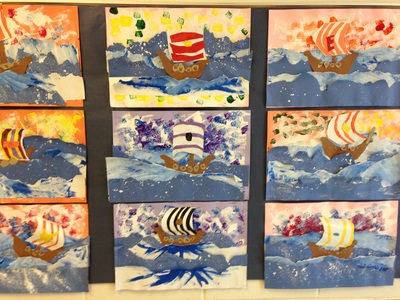
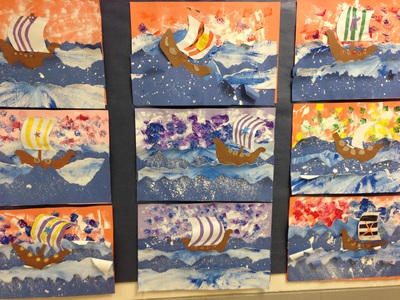

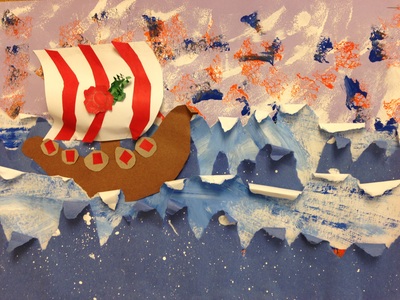




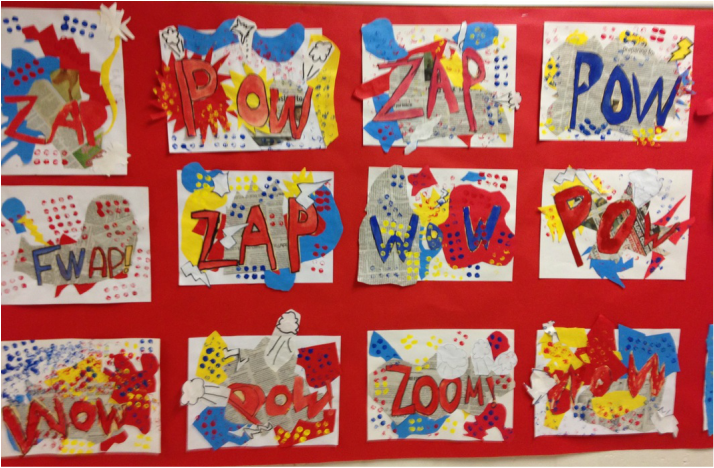
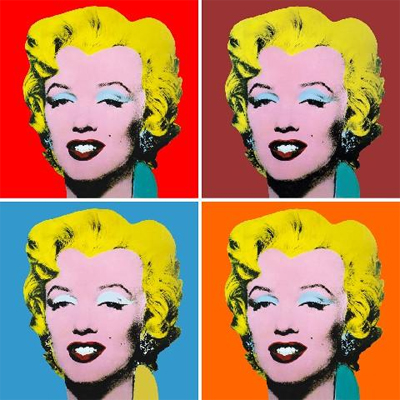



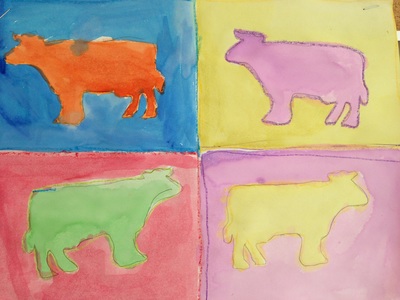




 RSS Feed
RSS Feed
